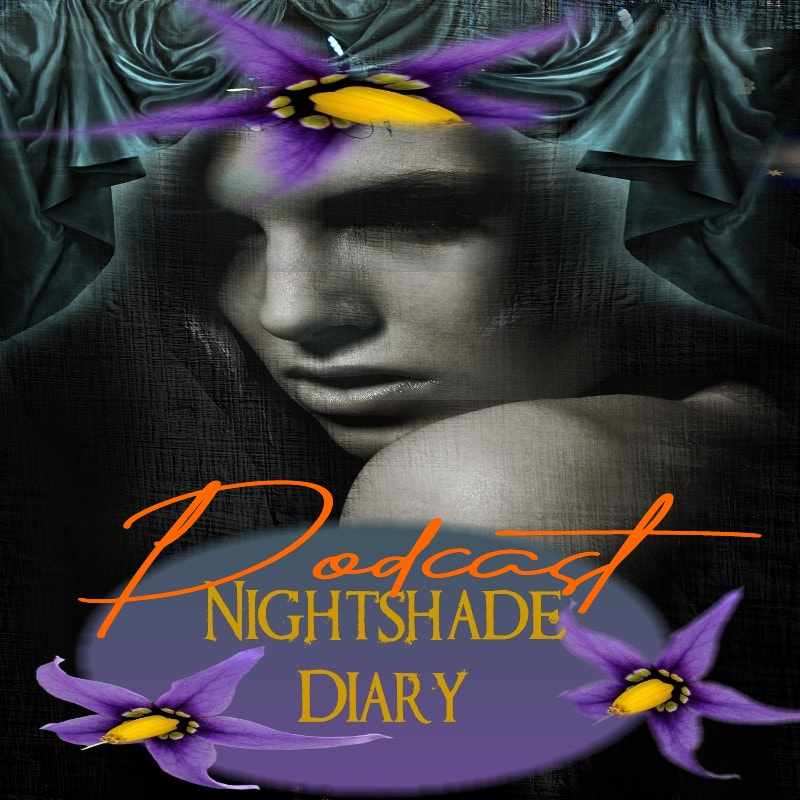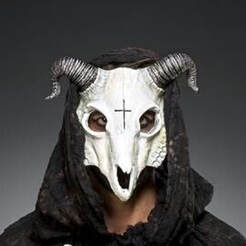 By M.P. Pellicer | Stranger Than Fiction Stories In the early 1970s, violent crimes that appeared separate and distinct from other events, in hindsight seem to have a dark thread binding them together. 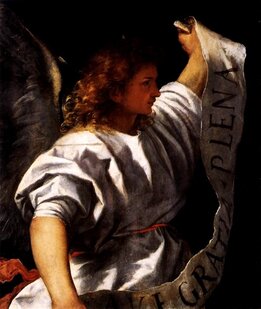 Archangel Gabriel known as the enemy of asmodeus Archangel Gabriel known as the enemy of asmodeus In 1972, John Godwin wrote a book titled Occult America. For his research he went to San Francisco and interviewed Anton LaVey. Then he came across a group known as the Asmodeus Society, named after one of the seven princes of hell. He represents lust, and his enemy is the Archangel Gabriel. They were a satanic cult with an Afro-Caribbean influence. Their members "were barred from speaking satan's 'sacred name'". Godwin described attending a meeting held at the upscale home of a dental surgeon in Westchester County, New York. The high priestess for the night was 21 years old and named Judy. She made a living as a commercial artist. Eleven members participated in crazed ritual which ended when a nude, black woman prostrated herself on top of a Brazilian flag spread out on the floor. A hairy, naked man with a large belly came in wearing a horned goat's head. Inside a small, coffin-like white box, he pulled out a chicken which he decapitated with a razor, as a tape played Haitian music punctuated with the sound of voodoo rattles. The blood was spattered over the woman. The other members, three who were black, who observed the ritual cane forward to smear the blood over the woman and themselves. As far as he could tell they seemed to be high on something. He suspected it was probably DMT or hashish, but not liquor. Not long after this the ritual ended when the woman on the floor left. Later he learned the woman on the flag belonged to the cast of a current Broadway musical.  Even after the arrest of Berkowitz, questions lingered about other crimes in Westchester County Even after the arrest of Berkowitz, questions lingered about other crimes in Westchester County In 1976, Westchester County was plagued by a series of attacks on women by a mystery man that was dubbed "Dartman". He was so named because he had wounded 22 women with an air gun firing pencil-width, metal-tipped darts that were one-inch long. This happened in the span of two weeks. He would strike from 10 p.m. to 2 a.m., and the women lived in ground-floor or low-lying apartments. They would be standing near open windows. The first one attacked was a pregnant woman living in Hartsdale. She was washing dishes near a kitchen window, when a dart cut through the screen and hit her in the collarbone. The steel dart with a feather drew blood, and fell into the sink. Her husband ran outside, and couldn't find anyone in the yard. She couldn't understand why she had been targeted, but made sure in the coming months not to be standing next to windows. Based on his actions, a composite was put together. He was a young man, "a voyeur, a peeping tom who probably had a hang-up on women," and had graduated to inflicting pain on women. Psychologically, he was portrayed "as inexperienced with women and with a fear or hatred of them." The only clue police had was that he might drive a 1971 or 1972 Chevy Monte Carlo. They believed he lived in Yonkers since many of the attacks occurred there, but they admitted he had easy access to parkways which made it possible for him to be anywhere in the area. Nineteen police departments were assigned to investigate the crimes, which started in February, 1976, and seemed to end in July of the same year. Then in December the police department got egg on its face when they found out about another attack by listening to public radio accounts. This is when they decided to set up a hot line, and the department described the sniper as a phantom. "We don't even know if he's traveling on foot or by car." The last victim was a 23-year-old woman living at 17 Beaumont Circle in Yonkers. Lucky for Dartman, the Son of Sam stole the attention of the authorities in August 1977, and police did not spare much thought as to why he had stopped sniping at women. However it was inevitable that with David Berkowitz in custody, questions were being asked if he could be the "elusive Westchester Darksniper". The connection was made since Berkowitz had moved to Yonkers in April, 1976, and there was an overlap when the attacks were being committed, even though none of the women targeted by Dartman had died. Also no dart gun was found in Berkowitz's car and apartment when he was arrested. 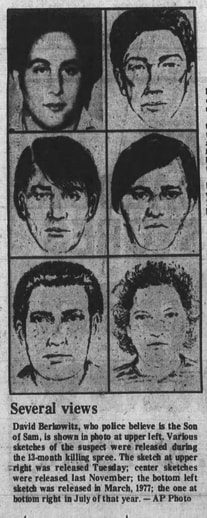 Composite issued for Son of Sam killer Composite issued for Son of Sam killer After 45 years there is speculation of a connection between Dartman and the Son of Sam killings, however there is only circumstantial evidence to link Berkowitz to the Dartman. He has never admitted to the crimes. There were also questions about the remains of three dogs that were dug up from behind 35 Pine Street where Berkowitz lived. Two neighbor boys found the dogs in plastic bags in December, 1976, and buried them in a nearby wooded area. After reading of Berkowitz's hatred of dogs they dug them up. They said two of the dogs had chains around their necks, and the third had a hole in its head. All were German shepherds. For some strange reason when reporters asked police about the finding, they said they didn't know of any dead dogs and "doubted they would be of any use in the case of the .44-caliber killings." Det. Wyka from New York City said they were not interested in the dogs as a possible angle. "They're satisfied —they got their man." he said. Why the police so easily dismissed a connection between the dogs and Berkowitz is unknown. Laura Pisaturo, the sister of one of the two boys who found the dead dogs described how in May, 1977, she had been waiting for her boyfriend a little after midnight when Berkowitz approached her. She said, "He came up to me and just stared. I smiled at him because I was scared. He didn't smile back. I walked away and ducked into the my house. My heart fell into my stomach." According to her, Berkowitz had been walking a dog in the parking lot when he came to where she was. He had once worked with guard dogs on the docks, and had a reported hatred of dogs. Later it turned out he shot the dogs of two of his neighbors. In May there had been no shootings. She she had seen Berkowitz occasionally, but didn't know who he was until after his arrest. She said, "I wouldn't have recognized him from the drawing (police composite), it didn't look anything like him." This supports the theory the composites were of different people and not Berkowitz, and that perhaps there was more than one perpetrator involved in the crime. David O'Gorman who lived across from Berkowitz on Pine Street believes all of the incidents are connected. Carl Denaro who survived a Son a of Sam attack in October 1976, believes the person who shot him in the head was not Berkowitz. From The Encyclopedia of Unsolved Crimes (2009), Michael Newton wrote: Journalist Maury Terry, investigating alleged satanic connections in the 'Sam' case, discovered that the Dartman was a symbol of death in 15th-century Europe. It made a tantalizing lead, combined with reports of cult gatherings, canine sacrifice and ritual gang rapes in Westchester County, but without a suspect or a solid lead the trail went cold. A similar series of woundings, blamed on an unknown blow-gun sniper, were reported from Washington , D.C. in the spring of 2002. That case also remains unsolved.  Jacqueline Martarella was raped in strangled c.1984 Jacqueline Martarella was raped in strangled c.1984 Terry's theory was that Berkowitz might have committed some of the murders but not all of them. He was chosen as a decoy to take the fall, and play the part of the crazy murderer. Terry theorized they'd convinced him by assuring him he would probably be sent to a sanitarium and not prison. His in-depth analysis of the time lines of the murders showed where there were some incidents where Berkowitz didn't fit the description, or he could not have been present at the times of the murders. Once he was in prison, it's believed Berkowitz was threatened with harm against his family, and in the years after his arrest many of of his associates were murdered or died in horrendous, and strange circumstances. Starting in June, 1984, for almost a year, several rapes and murders of teenage girls occurred on Long island. The evidence pointed to a gang of three or more men. One of the cases was solved, but with evidence that other accomplices were involved in other slayings. Maury Terry found a connection between devil-worshippers that were not identified or caught for the murders. 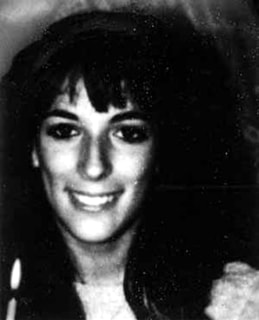 Theresa Fusco was abducted, raped and strangled in 1984 Theresa Fusco was abducted, raped and strangled in 1984 The first victim, Kelly Morrissey, 15, vanished on a walk home on June 12, 1984. Five months later her friend Theresa Fusco was forced into a van after leaving a skating rink. This was only a mile from where Kelly had disappeared. Fusco's body was found 6 months later. She had been beaten, strangled and raped by at least 3 men. John Kogut, 21, an unemployed dropout was picked on burglary and disorder conduct. When asked about the Fusco murder he confessed, and named two accomplices. Kogut's confession was videotaped where he said that Theresa had gotten into a van with him, Restivo and Halstead, who was a father of five and owned an aluminum siding business. The three of them worked occasionally for a moving company Restivo's family owned. They had driven to a nearby cemetery. He said Restivo and Halstead raped Theresa, and persuaded him to strangle her. They dumped her body near Hot Skates. He later recanted, but testimony of several inmates who were jailed with the defendants was used. Morrissey was still missing but her diary made mentioned a date with Kogut. 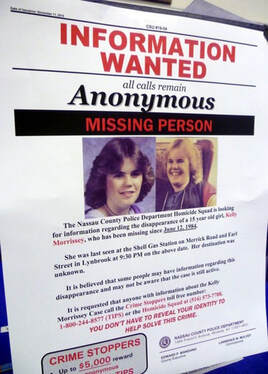 Kelley Morrissey has never been found, but her family believes she is deceased Kelley Morrissey has never been found, but her family believes she is deceased As of 2023, Kelly Morrissey has not been found. She left behind all her money and belongings, and her family believes she is deceased. Maury Terry visited the scene and found a "cult sign" linked to satanists in Queens and Yonkers who he suspected were part of the group who participated in the Son of Sam case. On Sunday, March 26, 1985, nineteen-year-old Jacqueline Martarella left her friend's house to walk to Burger King to start work. She never made it to work. A month later Jacqueline’s body was found naked and strangled on the 17th hole of the Woodmere Country club Near to where Martarella was found, searchers found an abandoned cellar decorated with cult symbols. Outside was clothing similar to some described by Martarella's parents that she was wearing when they last saw her. Kogut denied participating in the cult, and said he killed her because she threatened to go to police. On May 9, 1985, police announced that a gang of 12 men were linked to 3 known murders, and at least 4 rapes where the victims survived. Prior to Kogut's trial a friend testified of Kogut's involvement in satanism and commercial pornography. His name was Bob Fletcher, 30, and he supposedly committed suicide in Rosedale, Queens on June 2, 1987. Police were unable to find the gun he used to shoot himself.  Death and the Miser c.1561 Death and the Miser c.1561 Maury Terry while investigating the Son of Sam case found a reference to "Dartman" as a 15th century symbol for death. During his research he found symbols and occult clues would be left at scenes, that were mostly difficult to recognize for what they were. In a 1561, painting titled Death and the Miser by Hieronymus Bosch, there is a depiction of a deathbed scene in which death creeps into the room holding a long thin dart, not the scythe which was more commonly used. There is another painting by an unknown artists titled The Dance of Death where the skeletal death holds a short, pointy item very similar to the metal-tipped darts that were used. In the early 1990s, 3 sets of DNA tests were conducted using an unused swab of semen taken from Theresa Fusco's body. Two excluded all three men, but one didn't exclude all three. In 2003, all three convicts were released on a $300,000 bond based on DNA evidence that showed semen found on Theresa Fusco belonged to another man. In 2005, further testing found the semen did not belong to any of them. This would leave the case of Theresa Fusco unsolved, along with Martarella's and Morrissey if she is ever found, and a rapist and killer walks free.
0 Comments
Your comment will be posted after it is approved.
Leave a Reply. |
Stranger Than Fiction StoriesM.P. PellicerAuthor, Narrator and Producer Archives
July 2024
Categories
All
|
Stories of the Supernatural
- Stories of the Supernatural
- Miami Ghost Chronicles
- M.P. Pellicer | Author
- Stranger Than Fiction Stories
- Eerie News
- Supernatural Storytime
-
Astrology Today
- Tarot
- Horoscope
- Zodiac
-
Haunted Places
- Animal Hauntings
- Belleview Biltmore Hotel
- Bobby Mackey's Honky Tonk
- Brookdale Lodge
- Chacachacare Island
- Coral Castle
- Drayton Hall Plantation
- Jonathan Dickinson State Park
- Kreischer Mansion
- Miami Biltmore Hotel
- Miami Forgotten Properties
- Myrtles Plantation
- Pinewood Cemetery
- Rolling Hills Asylum
- St. Ann's Retreat
- Stranahan Cromartie House
- The Devil Tree
- Trans-Allegheny Lunatic Asylum
- West Virginia Penitentiary
- Paranormal Podcasts
"When misguided public opinion honors what is despicable and despises what is honorable, punishes virtue and rewards vice, encourages what is harmful and discourages what is useful, applauds falsehood and smothers truth under indifference or insult, a nation turns its back on progress and can be restored only by the terrible lessons of catastrophe."
- Frederic Bastiat
- Frederic Bastiat

Copyright © 2009-2024 Eleventh Hour LLC. All Rights Reserved ®
DISCLAIMER
DISCLAIMER

 RSS Feed
RSS Feed


